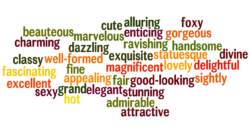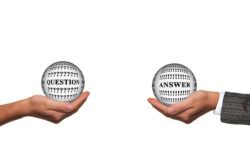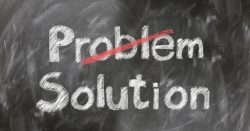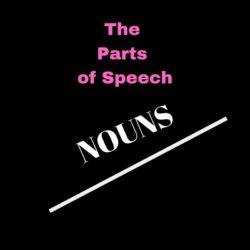Arlene Miller's Blog, page 33
September 6, 2019
Tainted Words – Best of the Grammar Diva from 2018
 Polysemia – An abnormal awareness of possible ambiguity; the uncontrollable tendency to bring to mind an inappropriate or unintended sense of a word in any context.
Polysemia – An abnormal awareness of possible ambiguity; the uncontrollable tendency to bring to mind an inappropriate or unintended sense of a word in any context.
So polysemic words can have more than one meaning. But they can also simply have a connotation that is brought to mind when one hears the word. Words with a negative connotation are said to have “semantic taint.”
You know if you have ever been a teacher in junior high or high school that you cannot tell your students to turn to page 69. You can’t use the word balls even if you are talking about sports. There are lots of words and names like that.
gay – Now has actual two different meanings: 1) happy and joyful, 2) homosexual
queer – 1) Odd, 2) Slang for homosexual
homo as a prefix – see above
diaphragm – 1) part of the body used to breathe and sing, 2) birth control device
fairy – 1) little character with wings in fairy tales, 2) slang for homosexual man
period – 1) punctuation mark, 2) menstruation
prick – 1) to stab as with a needle, 2) slang for male body part
screw – 1) little tool for putting things together, 2) slang for sex
There are people’s names who either mean something (generally in slang) and some that simply have a negative connotation:
Jack – May bring to mind the slang jack off.
John – Also name for a bathroom or for a prostitute’s customer.
Jezebel – Brings to mind a loose woman, although doesn’t actually mean it
Adolph – Perfectly fine name, but may bring up negatives, as one might first think of Hitler owning that name
Dick – Also slang for male body part
Peter – Ditto
Mr. Pecker, from the National Inquirer – Ditto!
Prudence – Might bring to mind the thought that the owner of this name is a prude.
There is another category of words that have perfectly fine meanings, but sound “dirty” even though they are not. If you are talking to children, you might get titters (there’s one right there) when you say these words:
hoary (not whore-y)
penal
asinine
feckless
titillate
Uranus
tit for tat
seaman (person in the Navy)
Some of this information comes from a book, Verbatim, which I recommend to word lovers. The book was taken from a journal, Verbatim, The Language Quarterly. Founded in 1974, the journal was supposed to have 4 pages per issue. It soon grew to 6 pages and then to as many as 64 pages per issue. The first 24 issues take up 991 pages of text.
Verbatim was founded by Laurence Urdang, one of the most prolific lexicographers of the English language. He was also a dictionary editor. The final editor of the now defunct journal was Erin McKean, an American lexicographer and the founder of Wordnik.com, the world’s largest online dictionary. She is also the editor of the book Verbatim.
Lexicographer: A person who compiles dictionaries.
A Little Lay-and Lie Lesson – Best of the Grammar Diva from 2017
I recently received a question asking when I was “going to have the courage to tackle” the lay/lie situation. Well, I have talked about it before, but bring it on . .  and here we go . . .
and here we go . . .
To lie and to lay are present tense verb forms. Let’s forget about the definition of lie that means not telling the truth. We are talking about the reclining kind here.
Grammatically speaking, lie is an intransitive verb, meaning it takes no direct object after it. A direct object is a noun (person, place, thing, or idea) or pronoun (takes the place of a noun, e.g., him, her, me, it, them) that receives the action of the verb. Lay, on the other hand is transitive and does take a direct object.
What does this mean in “regular” terms? You must lay something or someone down. Now, most people don’t use lie and lay at all for present tense because it sounds odd; instead they use a variation of the present tense (progressive present tense, using the present participle form). Here are some examples of using lay and lie and of using the more common progressive tense (-ing).
I lie on my hammock. (present tense; lie is correct because there is no noun or pronoun directly after lie)
I lay my book on the hammock. (present tense; lay is correct because you are laying something: book)
I am lying on my hammock while I talk on the phone. (More common present tense using -ing)
I am laying my book on the hammock while I get my lunch in the house. (More common present tense)
Things can also lie, not just people:
A pile of rocks is lying on the side of the road.
They are laying a pile of rocks on the side of the road. (Laying a pile: has a direct object)
The dog is lying in the sun.
The dog is laying his bone in the doghouse. (Laying his bone: has a direct object)
Now, that is easy enough. So let’s go to the past tense. What did I do maybe yesterday? The past tense of lie is lay. Yup. Confusing. The past tense of lay is laid. Not so confusing.
Yesterday, I lay in my hammock all day. (Past tense of lie)
Yesterday, I laid tile in my bathroom (Past tense of lay because there is a direct object: tile)
Now, let’s go to the past participle. That is the form we use with have, had or will have in front of it. Actually, many people don’t use these tenses at all, especially in speech, where things are often more casual. However, here we go. The past participle of lie is lain, even thought many people have never heard of it. I am not sure I have ever used it. And the past participle of lay is laid, which is a lot easier to remember.
I have lain on this hammock for three hours.
She has lain in the sun too long!
She will have lain in the sun for three hours by the time we need to leave for dinner.
I have never laid tile before.
Okay. I am going to give you a trick you can use. Subsitute the word “place” for your lay or lie. If place works, you use lay or its variations: is laying, was laying, have been laying, had been laying, laid, have laid, had laid, etc. If place doesn’t work, it is the lie verb you need.
I lie down.
I am lying down. (present participle: lying)
Yesterday I lay down.
Every day this week I have lain down.
I had just lain down when the doorbell rang.
Got it? But wait, there is more. And this “more” is never written about for some reason. It is a rule I never thought about before because is doesn’t usually come up — but it does with lie.
What about the past tenses that use -ing (past progressive)? Was I laying down yesterday or was I lying down yesterday? It is simple past tense (although progressive using the -ing) so should it be was laying? But obviously that isn’t right because was laying belongs to lay. Argh!!!!! Well, if you think about it, we always use the present participle for those tenses: I was running, not I was ranning; I was swimming, not I was swamming. And I was lying down, not I was laying down.
Back to the trick I gave you above: I was placing down yesterday. The trick doesn’t work. So with the verb lie, in the tenses that use -ing, it is always still lie.
I am lying down.
I was lying down.
I have been lying down.
I had been lying down.
I will have been lying down.
Versus
I am laying my books down.
I was laying my books down.
I have been laying my books down.
I had been laying my books down.
I will have been laying my books down.
So that is apparently why most people never use or need the past tense of lie (lay) or the past participle of lie (lain): we usually speak in the past using an -ing tense.
Whew! That wasn’t easy. Kudos to my favorite reference book, The Gregg Reference Manual, for the trick about substituting the word “place.”
August 29, 2019
All About Adjectives
 Image by narciso1 from Pixabay
Image by narciso1 from PixabayAdjectives are words that describe or modify nouns, pronouns, and sometimes other adjectives.
That is a beautiful dress! (beautiful describes dress, a noun)
I am intelligent (intelligent describes the pronoun I)
Oh, lonesome me (lonesome describes the pronoun me)
What a bright blue sky! (bright describes the type of blue, also an adjective)
Colors and numbers are often adjectives:
I have a green pencil.
I have six pencils.
The articles — a, an, and the — are sometimes their own part of speech, but they are often considered adjectives, since they do come before nouns and modify them.
Some pronouns are also used as adjectives. We talked about the demonstrative and indefinite pronouns in this recent post.
The demonstrative pronouns — of which there are four — can also be used as adjectives. They are then called demonstrative adjectives (this, that, these, those).
I want this. (pronoun)
I want this book. (adjective)
These are pretty. (pronoun)
These vases are pretty. (adjective)
Some of the indefinite pronouns can also be used as adjectives:
You can have some. (pronoun)
You can have some candy. (adjective)
I have many of those. (pronoun)
I have many of those toys. (adjective)
Adjectives are pretty simple and have just a few grammar and punctuation issues:
Comma between adjectives — or not?
The order of adjectives
Comparatives and superlatives
Commas between adjectives — or not?
Sometimes you have two (or more) adjectives in front of a noun. Sometimes they both describe the noun. Sometimes the first adjective describes the second adjective.
It was a cold, snowy night.
It was a bright blue dress.
In the first example above, both adjectives describe night. And, as you see, there is a comma between the two adjectives. But there is not always a comma between two adjectives that describe the same noun:
Old plaid shirt
Big black cat.
How do you know if you should put a comma between two adjectives that describe the same noun? Try putting an and between the adjectives. If it makes sense with the and, you need a comma. Otherwise, there is no comma.
cold and snowy night makes sense: cold, snowy night
old and plaid shirt doesn’t really sound right: old plaid shirt
big and black cat doesn’t really sound right: big black cat.
And if the first adjective describes the second adjective — and not the noun — there is never a comma:
bright blue sky
red-and-white striped dress
Order of adjectives
Instead of reinventing the wheel, check out the blog post on this topic!
Five (number) beautiful (quality) tall (size) hundred-year-old (age) bell-shaped green Chinese vases.
Comparative and superlative
Comparatives and superlatives are either adjectives or adverbs. For adjectives we use the -er ending when comparing two things: bigger bicycle. We use -est when comparing three or more things: biggest bicycle in the store. Some adjectives, however, don’t have those -er and -est forms, for example, fun. There is no funner and funnest, although people say those words all the time! For words without -er and -est forms, we use more for comparative and most for superlative: more fun and most fun.
If we are going in the other direction, we use less for comparative and least for superlative: less fun, the least fun of all/ less pretty, the least pretty of all.
Here are the rules: If an adjective has the -er and -est forms, use them. Do not use more and most: prettier (yes), more pretty (no)
Do not use both the -er and more, or the -est and most: more nicer, most nicest (NO)
How do you know if a word has -er and -est forms. Well, you just do. And if you don’t, check with a dictionary.
For the month of September, I would say it it likely I will be running The Best Of The Grammar Diva posts (moving).
August 23, 2019
Political Word Salad
After the 2016 election, I did a couple of posts about the words we heard on the news at that time.
 Image by Bruce Emmerling from Pixabay
Image by Bruce Emmerling from PixabayLet’s have some fun with words we are currently hearing in the political news. But this time, they are scrambled. See if you can unscramble them. Then scroll down for the answers. I have made all the letters uppercase, so you cannot tell which ones are proper nouns. Some are two words. If you need a little help, scroll down to see the first letter of each word.
I S F R A F T
G E S N L I R P Y A E
L U E E R M L
C M I T D C A R E O B E A E T D
A A A N C V R
T R B I D L A
A X N D E E R T O E
C Y P O R S C I A N
M T S C I O D E R R S O T E M R I
I F R L B S T I U E
T I A F N A
P T M C H M E E I A N
A C T E M I L C G A H E N
O X F
N E N E G L R D A
S A P R I A E E M E G T N R
W E H T I S M C Y E R P U A
B G A K U O C N D R H C S C K E
D D O M A W
Y N T I H N A
O L N I C L U S O
B N S C M
CLUES: BEGINNING LETTERS
T
S P
M
D D
C
L
E
C
D T
F
A
I
C C
F
G
P A
W S
B C
M
H
C
M
SCROLL DOWN FOR THE ANSWERS:
KEEP SCROLLING
KEEP SCROLLING
ANSWERS:
TARIFFS
SINGLE PAYER
MUELLER
DEMOCRATIC DEBATE
CARAVAN
LIBTARD
EXONERATED
CONSPIRACY
DOMESTIC TERRORISM
FILIBUSTER
ANTIFA
IMPEACHMENT
CLIMATE CHANGE
FOX
GREENLAND
PARIS AGREEMENT
WHITE SUPREMACY
BACKGROUND CHECKS
MADDOW
HANNITY
COLLUSION
MSNBC
NEXT WEEK: Back to the parts of speech!
August 16, 2019
Parts of Speech: Pronoun Finale!
We have reached the last two pronoun types. Last week, we talked about the issues with relative and interrogative pronouns. The week before that, personal and intensive/reflexive. The week before that, we talked about each of the 6 types of pronouns. Today, we will talk about demonstrative and indefinite.
 Image by Christian Dorn from Pixabay
Image by Christian Dorn from PixabayDemonstrative pronouns really don’t cause any problems. There are only four of them: this, that, these, and those:
I like this.
Who did that?
I want some of these.
Who took those?
Much of the time, however, they are used as adjectives: I want those cookies. I read that book.
Two things to remember when you use them as adjectives:
Try to avoid using the phrase “these ones” or “those ones.” You don’t need the “ones.”
These and those are plural, so use a plural noun when you use them: I like these types of songs NOT I like these type of songs.
Indefinite pronouns cause a lot of problems. Indefinite pronouns include everything, something, anything, anyone, everyone, nothing, many, all, few, none. The problem is in determining which are singular and which are plural, so you can use the appropriate verb with them.
Although words like everyone and everything sound plural, they are actually singular. Here are some singular indefinite pronouns: anyone, anything, anybody, everyone, everything, everybody, no one, nothing, nobody, someone, something, somebody, one, each, either, neither
Everyone is here. (singular verb is)
Is anyone there?
Nothing is wrong.
Someone is knocking at the door.
Either you or Fred is going next.
Neither of us is able to go.
And the pronouns to which they refer in the sentence must also be singular.
Everyone on the girls basketball team should have her new uniform tomorrow. (Use her because you know they are all girls.)
Everyone in the classroom should have his or her book. (Don’t like “his or her”? You can now use “their” or they or them as a singular if you wish. My advice is to rewrite the sentence to avoid the issue entirely. Everyone in the classroom should have a book.
These indefinite pronouns are plural: both, few, many, and several (and they sound plural)
Both are beautiful, so it will be a difficult choice.
Few people are in the audience.
Many are applying to Harvard.
Several are participating in the protest.
Some indefinite pronouns can be either singular or plural depending upon the noun they refer to, which is usually in a prepositional phrase that comes after the pronoun: all, any, more, most, some, none
All of the cake is gone. All of the pizzas are gone.
Is any of the pie left? Are any of the pieces left?
More of these papers are coming in. More of this information is needed.
Most of the songs are new. Most of the jazz piece is very fast.
Some of the girls are playing tennis. Some of the team is resting.
None of the vases broke. None of the valuable vase was broken.
August 9, 2019
Parts of Speech: Pronouns, Part 3 – More of the Issues
 Image by Gerd Altmann from Pixabay
Image by Gerd Altmann from PixabayA couple of weeks ago, we talked about the six kinds of pronouns. Then last week we talked about some of the issues with using personal and intensive/reflexive pronouns: things like I versus me; and I and me versus myself. Today, we will talk about the issues with interrogative and relative pronouns since they look almost the same, although they are used differently.
Interrogatives
First, please note that the five interrogative pronouns are NOT the same as the five journalistic questions. The journalistic questions are Who, What, When, Where, and Why. The only two of those that are pronouns are who and what. The interrogatives are who, whom, whose, what, and which.
The issue with the interrogatives is WHO versus WHOM. If you are ever in doubt, use who. An incorrect who will likely go unnoticed, but an errant whom sounds just plain weird. The thing with who and whom is the same as the thing with I and me: case. Who is used as a subject, like I; whom is used as an object, like me. How do you figure out which one to use? There are a few ways:
Look for the verbs in the sentence. Find the subject for each verb. If your who/whom appears to be a subject, use who. If all the verbs have other subjects you have identified, and none of the subjects is your who/whom, it is likely an object and you can use whom.
Answer the question. Who/Whom are you taking to the movie? I am taking her. Therefore, use whom. It isn’t I am taking she. Who/whom is coming to the party? They are coming to the party (not them). So use who.
If the who/whom comes right after a preposition like with, by, for, at, to, etc., use whom — even if the preposition is put at the end of the sentence and the who/whom is at the beginning. Who/whom are you going with? I am going with him. Use whom. To who/whom are you giving that gift? Since it comes directly after to, use whom.
The interrogative pronoun is whose and not who’s. Whose book is that?
The other two interrogatives, which and what, can also be used as adjectives, but the distinction will not cause any problems.
What is that? (pronoun). What book are you reading? (adjective)
Which are those? (pronoun). Which way are you going? (adjective)
Relatives
The problem with the relative pronouns is mainly whether to use that or which. Then, of course, wherever there is a who or whom, there is a problem.
That is generally used without a comma for clauses that are necessary for the meaning of the sentence (essential clauses): Here is the book that I told you about. You need that I told you about for the sentence to make sense. It tells you which book. You should read this book, which was a bestseller last year. In this case the clause is added information, sort of a “by the way.” Because you said this book, the person you are talking to probably knows the book you mean, Therefore, use a comma and which.
For people, we generally use who, with or without the comma. For a group of peoples you can use that: He is the boy who plays football. The boy who plays football, who is also a great student, is in 10th grade. The native American tribe that is from my town has a monument in the town square.
Who and whom are the same in relative clause use as they are as interrogatives. Who is a subject and whom is an object. (Remember that after the verb is or was or are (the to be verb) you use the subject form. You can use the same methods to figure out whom versus who as in the interrogatives. You won’t be able to answer the question, though, because they are not questions. But you can turn it into a question and answer it. I have a cousin who is an astronaut. My cousin, whom I haven’t seen in ten years, is coming to visit. (Have you seen your cousin? No, I haven’t seen him in ten years. So it is whom.)
Here is a little quiz on relative and interrogative pronouns. Scroll down for the answers:
(Who, Whom) are you talking to on the phone?
I know a girl who can bend all the way backwards. (comma after who or not?)
Please tell me (who,whom) you are choosing for the lead in the play.
The people (who, whom, that) are talking in the corner are the executives.
The movie (that, which) I saw last night was scary. (comma?)
Answers:
whom
no comma
whom
either who or that
that – no comma
What’s Next?
Next week will be the end of the pronoun series with a discussion of demonstrative and indefinite pronouns.
The following week will likely be a guest post.
Then, I might run some Best Of the Grammar Divas with hopefully some other interesting info I find on the Internet until I get moved to Florida, when I will resume the parts of speech series.
August 2, 2019
Parts of Speech: Pronouns, Part 2 – Some of the Issues
 In last week’s post, we talked about the six types of pronouns. Pronouns can be pretty troublesome. This post will clear up some confusions about personal and reflexive/intensive pronouns, namely:
In last week’s post, we talked about the six types of pronouns. Pronouns can be pretty troublesome. This post will clear up some confusions about personal and reflexive/intensive pronouns, namely:
Is it I or me ? and the rest of those
It is it’s or its ?
When do I use me, when do I use I , and when do I use myself ?
Pronouns have “cases,” or different forms for different uses. Thank goodness English pronouns have only three cases; some languages have eight and have them for nouns as well; we really don’t.
The nominative case is used for subjects. Those pronouns are I, we, you, he, she, they, and it. That is why we don’t say “Him and me went to the show.” Whoever is doing the action of the verb is the subject, and it usually (but not always) appears at or near the beginning of the sentence. He and I went to the show. She and I went to the show. She and they went to the show. However, note that after the “to be” verb ( is, are, was, etc.), we use the nominative case as well. So it is correct to say, It is I or This is she , although it sounds a little stilted. So if you want to say, It’s me , I am not going to stop you.
The objective case is used for objects. Those pronouns are me, you, him, her, it, us, and them . They come after the verb and sometimes after a preposition. I saw him. I made her a cake. I did it for them. I saw him and her. He gave it to Jim and me. Note that after a preposition such as by, for, to, with, and any other preposition, you use the objective case pronouns.
The possessive case is obviously used for possession. Those pronouns are mine, yours, his, hers, ours, its, and theirs. (My, your, her, their, and your are usually used as adjectives, so I didn’t include them.) So if you ever forget whether to use its or it’s, remember that its is the possessive one. AND, like its, none of the possessive pronouns have an apostrophe (but possessive nouns do).
The reflexive pronouns have the same form as the intensives; it just depends on how they are used. They are the pronouns ending in -self or -selves: myself, ourselves, yourself, yourselves, herself, himself, itself, and themselves.
Intensive: (used for emphasis) I myself climbed that mountain. OR She climbed that mountain herself.
Reflexive: (refers back to the subject). I gave myself a manicure. She baked herself a birthday cake.
These pronouns are NOT used as subjects. These sentences are incorrect:
He and myself built our house.
Myself and my brothers took a cruise.
These pronouns, however, can be used as objects: direct, indirect, or object of a preposition:
I saw myself in the mirror. (direct object)
I gave myself a manicure. (indirect object; manicure is the direct object of gave .)
I did it by myself. (object of the preposition by )
In all the correct sentences using the -self pronouns, what do you notice? Yup. If you use myself, the subject is I. If you use herself, the subject is she. The subject matches the object pronoun. If the -self pronoun doesn’t match the subject pronoun, you likely need to use the objective case, not the reflexive:
NO: He saw my brother and myself walking down the street. YES: He saw my brother and me walking down the street.
NO: She said her cousin and myself are the only people she could trust. YES: She said her cousin and me are the only people she can trust.
Please let me know if you have any other questions about these two types of pronouns. I think I covered it all. Next week, we will talk about interrogative and relative pronouns.
July 26, 2019
Parts of Speech: The Six Types of Pronouns
Last week’s post talked about issues with nouns. Now, pronouns — they have issues!

Pronouns cause a variety of problems with speaking and writing. Of course, the most common is the I/Me issue. But there are many other pronoun problems. In today’s post, I am just going to introduce the SIX kinds of pronouns. Yup, six.
First of all, what is a pronoun? We know a noun is a person, place, thing, or idea. A pronoun is a word that stands in for a noun (or another pronoun). Here are some examples:
Joanne hid her dress from her mother.
Pronouns come in handy because Joanne hid Joanne’s dress from Joanne’s mother is unwieldy!
John came into the room. He then sat in the most comfortable chair.
Sounds better than John came into the room. John then sat in the most comfortable chair.
Do you need to know what the six types of pronouns are? Of course not. Only grammar nerds like me care. The types are simply grammar vocabulary, so when someone refers to a personal pronoun, you know what they are talking about.
Here are the six types of pronouns:
Personal pronouns are what I like to call “plain old pronouns.” They are the words everyone thinks of when they think of pronouns (IF they think of pronouns). Some examples are I, me, he, she, her, him, it, us, they, its, we, you, your, my, his, etc. Notice that some of them are possessive (more about that next week). Personal pronouns are used as nouns are used in a sentence: as subjects or objects.
Demonstrative pronouns point things out. There are only four of them: this, that (singular) and these, those (plural). These four can also be used as adjectives (these books). Demonstrative pronouns are also used as subjects or objects when they are used as pronouns.
Intensive and reflexive pronouns are the ones that end in –self: myself, yourself, yourselves, ourselves, himself, herself, itself, etc. They are called intensive when used to emphasize, like this: I myself made that chocolate torte. They are called reflexive when they reflect back to the subject: I made that chocolate torte myself.
Interrogative pronouns, as their name indicates, are those pronouns used to ask a question: who, whom, what, which, and whose: Who are you? Whom did you invite? What is that? Which is yours? Whose are those books? (Which can also be an adjective: Which coat?)
Relative pronouns are the five that are almost exactly the same as the interrogatives except they don’t ask a question. They are used to introduce adjective or noun clauses. Who, whom, that, which, and whose are the relative pronouns — the same as the interrogatives except what changes to that: I know who you are. She is the friend whom I invited. Here is the book that I wrote. I baked this strawberry cake, which won an award at the fair. Jack is the neighbor whose car I borrowed.
Indefinite pronouns are the words you wouldn’t think were pronouns, and there are many of them. Here are just some: something, someone, somebody, everyone, everything, anyone, none, all, few, many, some, no one, either. Some of these can also be used as adjectives.
We will talk about the issues these persnickety pronouns cause in the next couple of weeks. A little preview:
Personal: I versus me, its versus it’s
Demonstrative: When used as pronouns, no problems.
Intensive/Reflexive: Incorrect use of myself
Interrogative: Who versus whom
Relative: Who versus whom; which versus that
Indefinite: Are they singular or plural? Do you use a singular or plural verb with them?
July 12, 2019
Parts of Speech : Nouns, Part 2-Special Issues
 Image by Quinn Kampschroer from Pixabay
Image by Quinn Kampschroer from PixabayLast week we talked about the types of nouns. Nouns seem like such an easy and simple part of speech, you wouldn’t think there would be any issues with them. But there are . . .
Plurals
Nouns have plurals. Obviously, it would be simple if we just added -s to the end of a word to make it plural. But of course, as with everything else in English, there are many exceptions. Here is a list of the significant rules:
Add an s: books, cows, thoughts
If the singular noun ends in ‑s, -ss, -sh, -ch, -x, or -z, add -es : buses, bushes, classes, churches, taxes
Sometimes the words ending in -s or -z need that letter doubled before the -es: quizzes, busses (or buses)
If the noun ends with ‑f or ‑fe, the f is often changed to ‑ve before adding the -s: knives, wives (there are exceptions like roofs, chefs)
If a singular noun ends in ‑y and the letter before the -y is a consonant, change the ending to ‑ies: studies, candies
If the singular noun ends in -y and the letter before the -y is a vowel, just add an -s: days, guys
If the singular noun ends in ‑o, add ‑es: potatoes (there are exceptions like pianos, halos)
If the singular noun ends in ‑us, change it to -i: cacti. foci.
If the singular noun ends in ‑is, change it to ‑es: ellipses, analyses.
If the singular noun ends in ‑on, change it to ‑a: phenomena
Some nouns don’t change at all in the plural: sheep, deer, species
And some nouns have irregular plurals: men, children, geese
Notice that there is no mention or apostrophes in the pluralization rules! 
Parts of Speech Series: Nouns, Part 1
 Nouns. Probably the first part of speech you ever heard about. And you no doubt remember the little ditty that went with nouns: “A noun is a person, place, or thing.” And if you had a very good teacher: “A noun is a person, place, thing, or idea.” And although we think of nouns as things we can see or touch, some — like ideas — we cannot.
Nouns. Probably the first part of speech you ever heard about. And you no doubt remember the little ditty that went with nouns: “A noun is a person, place, or thing.” And if you had a very good teacher: “A noun is a person, place, thing, or idea.” And although we think of nouns as things we can see or touch, some — like ideas — we cannot.
So nouns would appear to be pretty simple. But they do have some issues that we will discuss next week. For now, know that there are five categories of nouns, and every noun is in two or three of those categories. And these categories don’t include singular or plural, which is another feature of nouns.
Common nouns: A common noun is any noun that is not a specific person, place, thing, or idea and thus begins with a lowercase letter:
girl
school
car
religion
movie
idea
Proper nouns: A proper noun is a specific person, place, thing, or idea and is capitalized:
Alice
MacDonald Elementary School
Honda
Hinduism
Star Wars
Theory of Relativity
Concrete nouns: Concrete nouns are all the nouns that you can see or hear or feel or smell or taste. So even air is concrete since you can feel it. In the examples above 1,2,3, and 5 are concrete.
Abstract nouns:Abstract nouns are the ones you cannot sense. You can read a book on Hinduism or see a person who is Hindu, but you cannot see Hinduism. Examples 4 and 6 above are abstract.
So each noun is either common or proper — and also either concrete or abstract.
Common Concrete – table
Proper Concrete – Golden Gate Bridge (and yup, nouns can have more than one word, particularly proper nouns)
Common Abstract: thought
Proper Abstract: Judaism
Collective Nouns: Collective nouns are usually common and represent a group (which itself is a collective noun) even in the singular. However, collective nouns can be singular or plural. Here are some collective nouns:
band/bands (musical ones)
audience/audiences
cast/casts (in a play)
flock/flocks
orchestra/orchestras
Regular old plurals are not collective nouns. For example, people is a plain old plural, the singular of which is person. It is not collective.
Cases: Cases are forms of words. Latin has five cases. If you have ever studied Latin, you might remember that you use a different form of a noun depending upon whether it is a subject, an object, possessive, etc. Other languages have seven or eight cases. English has only three, and only pronouns have different forms for the three cases. Nouns have a different form only for possessive. (Plural is not a case.)
One More Thing About Nouns: Just because a word is a noun doesn’t mean it cannot also be another part of speech, or another two parts of speech, or three.
All the parts of speech were described in this recent post.
Many nouns are also adjectives:
Thanksgiving (noun)/Thanksgiving dinner (adjective)
summer (noun)/ summer vacation (adjective)
apple (noun)/apple pie (adjective)
Many nouns are also verbs:
He gave me a look. (noun)
He looked at me. (verb)
I made a plan. (noun)
I will plan a vacation. (verb)
Some nouns are verbs that have nothing to do with the noun:
I saw you. (verb)
He used a saw to cut the wood. (noun)
Some nouns are other parts of speech.
Well is an interesting word:
Timmy fell into the well. (noun)
Are you feeling well? (adverb)
Well, I never saw you there! (interjection)
NEXT WEEK: Some issues with nouns:
plurals
possessives
agreement with collectives
capitalization
hyphenation
No, I haven’t sold my house and moved to Florida yet. Still sitting here . . .



